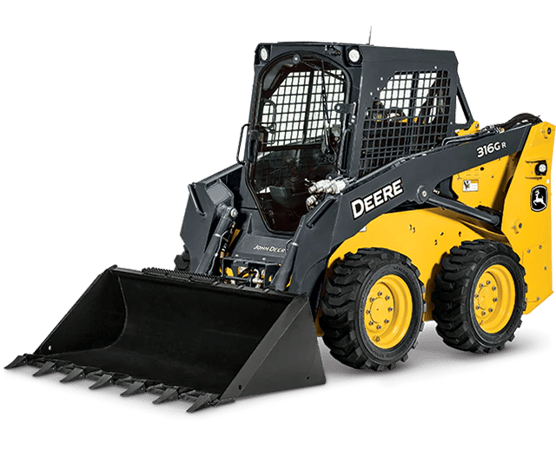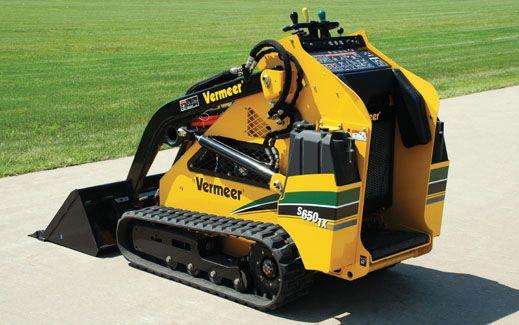Aerial Lift Rental: Versatile Lifting Solutions for High-Access Jobs
Aerial Lift Rental: Versatile Lifting Solutions for High-Access Jobs
Blog Article
Maximize Your Budget by Recognizing the Expenses Related To Construction Tools Leasings
Understanding the full range of costs associated with construction equipment services is critical for optimizing your budget. What approaches can be utilized to properly manage these costs and make sure an extra efficient rental experience?
Introduction of Rental Costs
When taking into consideration building equipment services, understanding the linked expenses is extremely important for efficient budgeting and project planning. Rental prices can vary significantly based on numerous elements, consisting of equipment kind, duration of leasing, and area. The initial rental cost frequently mirrors the equipment's market need and its linked operational capacities, influencing the general expenditure.
Along with the base rental rate, secondary costs may emerge, such as transportation charges, gas surcharges, and maintenance costs. It is vital to represent these added expenses to precisely examine the total cost of leasing tools. Furthermore, the rental period can influence rates; longer rentals might get discounted rates, while short-term leasings may sustain greater daily fees.

Break Down of Rental Rates
A comprehensive understanding of rental rates is essential for contractors and project supervisors intending to enhance their budget plans. Rental rates for construction tools commonly include a number of components, including base prices, time-based fees, and usage fees.
Base prices are the core fees connected with the rental of the tools, commonly figured out by the type and dimension of the equipment. These rates can differ substantially, influenced by factors such as tools demand, availability, and local market patterns. Time-based charges, which might be daily, weekly, or monthly, serve to suit various project timelines and rental periods.
Furthermore, rental rates might include use charges, which apply when tools is used past a specified threshold, making sure that the rental company can make up deterioration. Seasonal need fluctuations can likewise impact rental rates, with peak construction periods commonly commanding greater prices.
Additionally, understanding the rental company's plans pertaining to maintenance and insurance coverage can give further understanding into the general price structure. By assessing these components, service providers can make informed choices, ensuring the choice of rental tools aligns with both job needs and budget restrictions.
Additional Fees to Think About
Comprehending the ins and outs of added costs is crucial for professionals to manage their general leasing costs successfully. Past the common rental prices, numerous auxiliary charges can significantly impact the total price of tools service. These costs usually consist of distribution and pick-up fees, which can vary based on distance and logistics entailed in transporting the tools to and from the work website.
Additionally, some rental business may impose gas additional charges if the devices is returned with less fuel than when rented out. It is likewise vital to understand prospective construction excavator cleaning costs, specifically for specific equipment that requires thorough upkeep after use.

Completely examining the rental arrangement and making clear these additional costs in advance can help service providers prevent unexpected prices and guarantee that budgets continue to be intact throughout the job lifecycle.
Repair And Maintenance Expenses
Routine maintenance and repair service expenses go to my site are commonly neglected variables that can considerably affect the overall expense of construction devices services. When renting devices, it is crucial to think about not just the rental fees however additionally the potential expenses connected with keeping the machinery in ideal operating problem.
Numerous rental business consist of standard maintenance as part of the rental contract; nonetheless, more unforeseen failures or extensive repair work can cause added expenditures. It's necessary to evaluate the rental contract very carefully to recognize what upkeep solutions are covered and what duties drop on the renter.
Additionally, devices that is not well-kept can cause ineffectiveness at work website, possibly raising and creating hold-ups task prices. To minimize these threats, it is suggested to carry out regular examinations and preserve open communication with the rental copyright pertaining to any issues that develop throughout use.
Insurance Coverage and Obligation Expenses
Insurance and liability prices are important components that can significantly influence the total cost of building equipment services (scissor lift rental). These costs view ensure that both the rental firm and the client are protected from possible monetary losses arising from crashes, damage, or burglary throughout the rental period

In addition, clients must be aware of any type of deductibles or exemptions in the insurance plan, as these can affect prospective out-of-pocket expenditures. Understanding the terms of any insurance protection is vital to prevent unanticipated costs. Eventually, budgeting for insurance policy and liability costs can aid ensure a smoother rental experience and safeguard versus economic risks connected with building tasks.
Conclusion
In verdict, a detailed understanding of the expenses connected with construction equipment services is crucial for efficient budget plan management. Ultimately, educated decision-making relating to devices rentals adds to the general success of construction undertakings.
Rental expenses can vary significantly based on numerous elements, including tools type, period of leasing, and location (construction equipment rentals). The rental duration can affect pricing; longer leasings may certify for discounted prices, while short-term services might sustain higher day-to-day charges
By performing complete research and involving with trusted rental firms, professionals can effectively navigate the intricacies of rental pricing, inevitably maximizing their monetary sources.
Beyond the typical rental rates, different supplementary charges can significantly impact the total cost of equipment leasing. Rental firms frequently offer liability insurance policy that covers injuries to third celebrations or damages to residential or commercial property, while tools damages insurance can cover the expense of fixings or replacement if the leased devices is harmed.
Report this page